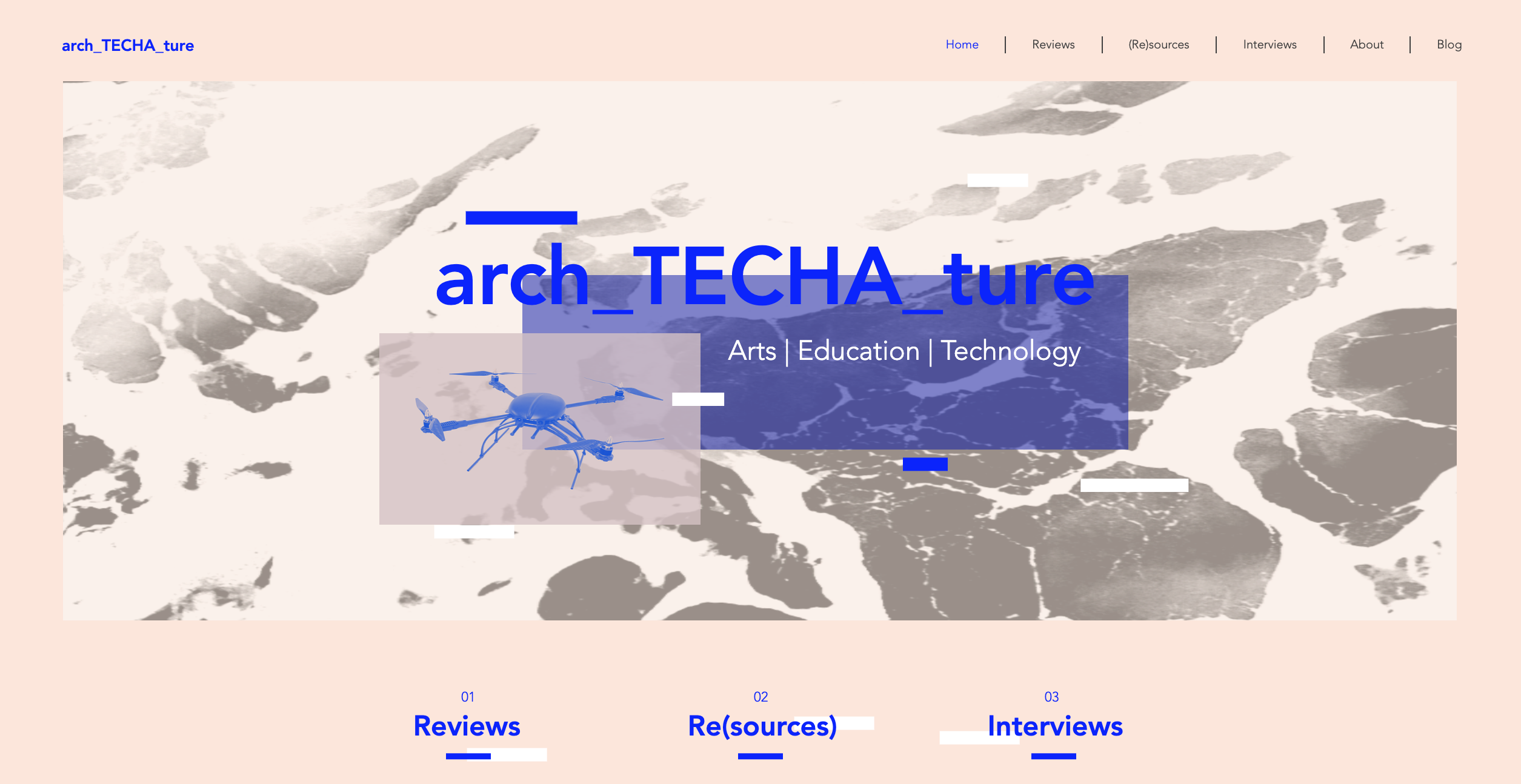
AASL Column, August 2019
Lucy Campbell and Barbara Opar, column editors
Column by Cathryn Copper, Head of the Art & Architecture Library, Virginia Tech
Cathryn Copper addresses a list of questions compiled by Lucy Campbell on a new initiative she is undertaking at Virginia Tech
arch_TECHA_ture: An Interview with Cathryn Copper
arch_TECHA_ture (“techa” a play on technology and bibliotheca, Latin for library) is a curation project created by Cathryn Copper that gathers information at the intersection of art, architecture, and design-related fields, technology and education. We sat down with her to hear more.
Hi Cathryn. How did you first get involved in technology and the creative disciplines?
It was partially serendipitous. I did my graduate work at the University of Toronto’s iSchool. There I focused on information systems and interned with a few architecture firms and think tanks. Fast forward a few years, I attended a conference session solely because the presenters were librarians at the University of Toronto. The session was on the use of iPad apps which gave me the idea to research mobile apps for architecture. That idea really took off and opened a lot of doors for me. I noticed a lot of art and architecture librarians were interested in technology but not a lot was being done on the topic.
You describe this as a “curation project” where do you see it going?
I use the term curation project because arch_TECHA_ture offers a quick look at topics at the intersection of design, information, and technology. I always provide links to more information, so readers can make informed decisions on a topic. As of current, I’m gauging interest. If it turns out it’s worth my energy, then I’d like to see it evolve into a more critical platform where we can have healthy discussions on these topics. I’d love to get more voices involved. Then it could truly be a platform to connect with people from across disciplines and launch projects together—still a curation project, but on a larger scale.
Can you tell us more about the educator-as-futurist model you have adopted, and what makes it distinctive?
I use the term “educator-as-futurist” to mean forward-thinking. But, there are no expectations and it’s not meant to be extremist. It’s really about being okay with experimentation and failure or the willingness to try something new. What makes arch_TECHA_ture distinctive is that there is no other place on the Internet, that I know of, addressing the intersection of design, technology, and education from the perspective of a librarian, someone that sits on the edge of all three.
As an art and architecture aficionado and tech lover, what are some of the technology trends you see impacting libraries and the design disciplines?
Without hesitation, augmented reality and virtual reality. There is so much potential for those technologies in libraries and the design disciplines alike. For libraries in particular, artificial intelligence. Information can be delivered in much better and more personalized ways and future generations are going to expect it.
What new projects are you working on that are destined to be included in arch_TECHA_ture?
There definitely will be no shortage of content. First, the Art & Architecture Library is experimenting with hybrid collections. We will be testing the use of our physical collections as an access point to our electronic collections through the use of interactive touch screens. Building on the transition for physical to digital, we are exploring 3D scanning technologies, which should be especially interesting to arch_TECHA_ture readers. More long-term projects include applying for a grant to develop augmented reality for libraries, and the development of Virginia Tech’s Innovation Campus.
What has surprised you most in your research into tech and libraries?
The slowness. There are a million amazing ideas. Only a few come to fruition because of limited time and money. It’s frustrating because I see the potential for libraries to interact with users in much better ways. I’ve been thinking about artificial intelligence in libraries for over a decade, and just this year I attended my first conference presentation on the topic, which was at a macro-level. So, it takes time.
What do you see as some of the big changes in academic libraries over the next five years?
In libraries generally, a shift to collaborative spaces is already happening. Academic libraries have the potential to function a lot like a WeWork, which are shared workspaces for startups. Also, I see more attention on dispersed libraries and library networks. Our footprint can spread much further if we don’t think of a library as one central space. Drone delivery would be cool too, but that’s probably closer to 10 years away. Art and architecture libraries face unique opportunities, in that our users generally want more traditional library spaces, and that’s okay. It adds diversity to the library landscape.

 Study Architecture
Study Architecture  ProPEL
ProPEL 